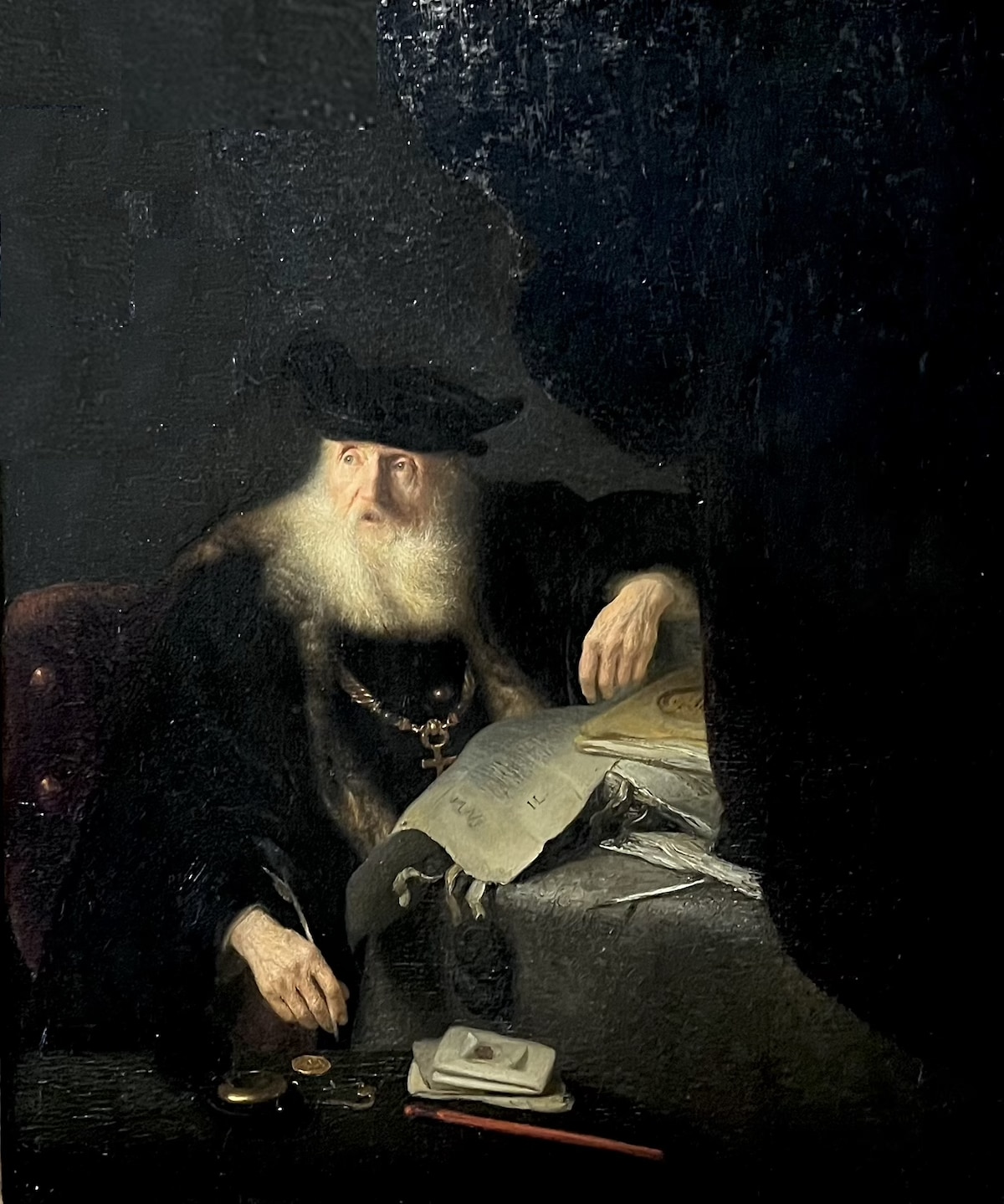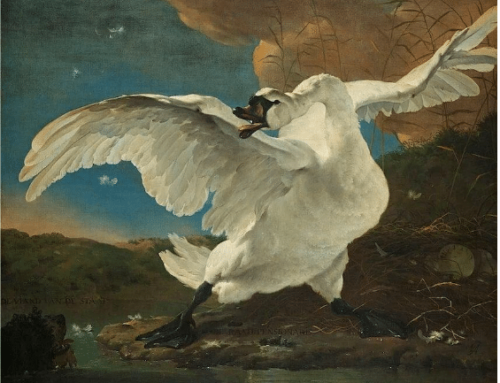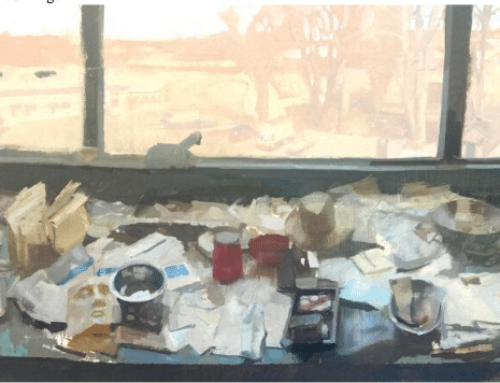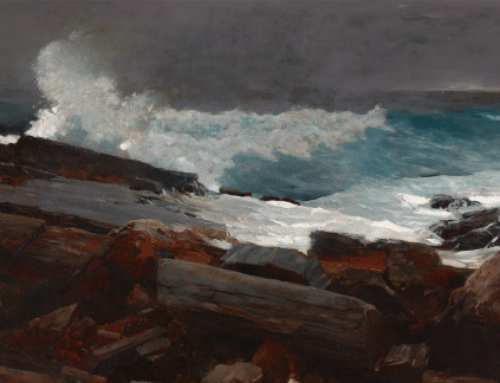Jan Lievens, Elderly Scholar in His Study, about 1630, oil on wood. Musee des Beaux Arts, Montreal.
Jan Lievens is among the most fascinating and enigmatic Dutch artists of the seventeenth century. Highly successful in life, his fame was eclipsed by that of his friend, Rembrandt van Rijn, with whom the talented but ill-fated Lievens could go stroke for stroke in any painting throw-down, any day of the week.
Lievens became friends with Rembrandt when the two were young, equally talented students in the same atelier. One of them would become literally the most famous painter of all time; Rembrandt’s name is nearly synonymous with painting. And Jan Lievens’ name is synonymous with … wait, Jan who?
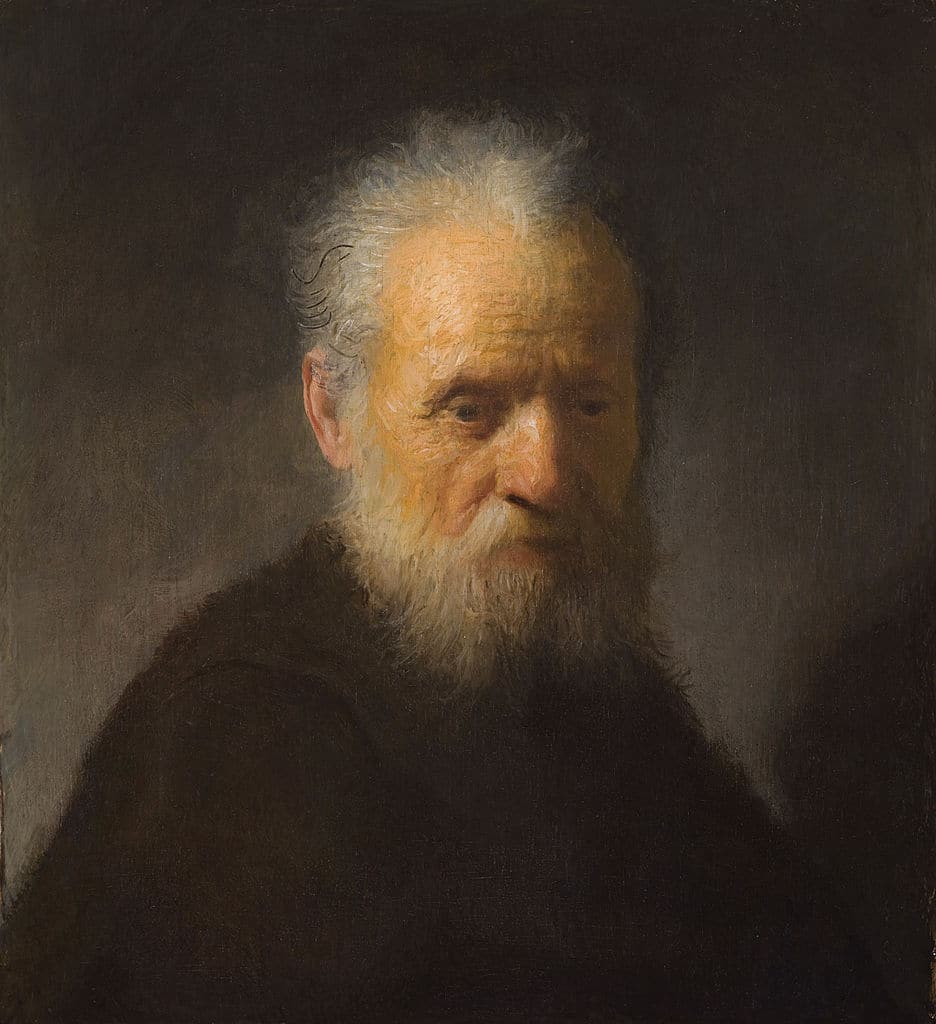
Rembrandt, An Old Man with a Beard
With equally penetrating insight not just into technique but into humanity itself, Lievens and Rembrandt painted each others’ portraits and appear as models in each other’s paintings. They may have even shared a studio fresh out of art school. By the early 1630s their works were so similar that people couldn’t tell them apart.
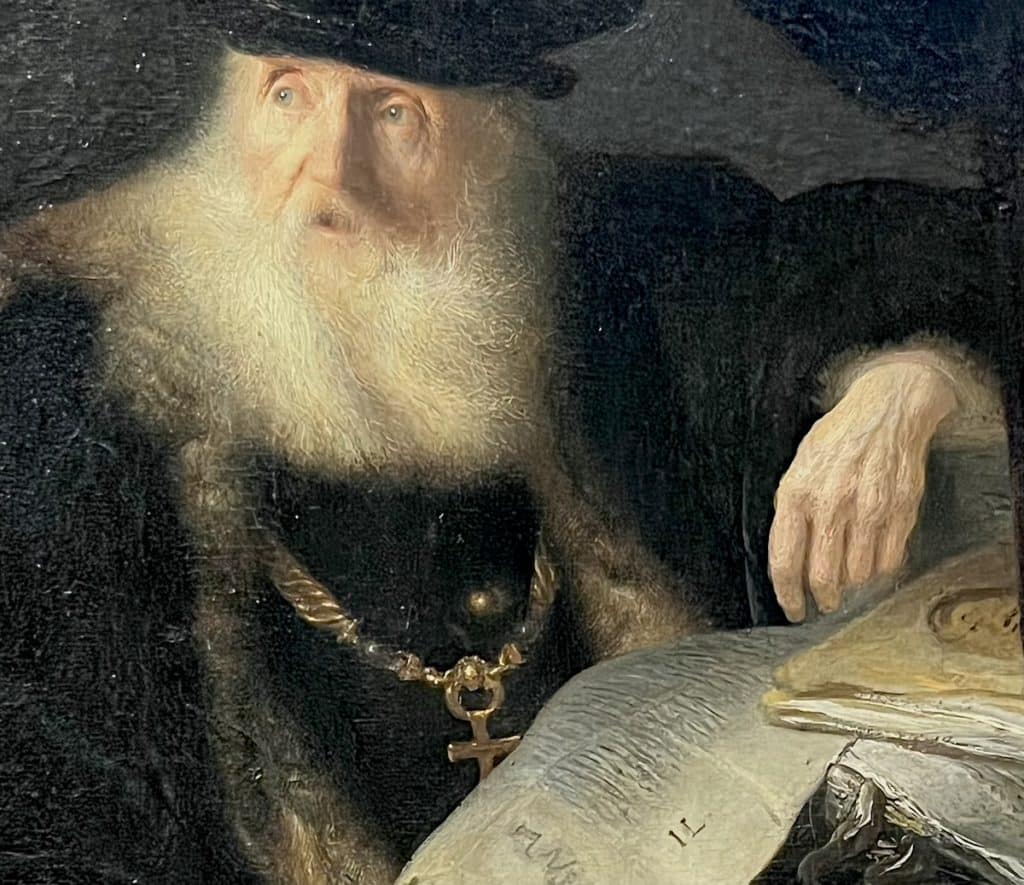
Jan Lievens, detail. Note the deep lines of thought and experience in the face and the highly textured flesh of the old scholar’s hand.
But Lievens, who had trouble sticking with a single style and never stayed anywhere long enough to establish a base for his career, seems to have had a difficult personality and “complicated” relationships with both family and patrons. He drifted away from the insightful psychological realism he initially shared with Rembrandt to explore other genres. After both of the artists died (life ended miserably in poverty and debt for both, as fate would have it), Rembrandt’s star rose as Lievens’ star fell.
Part of what made Rembrandt so famous was his practice of sending his numerous stunning self-portraits abroad (cementing his “brand” and making him the first truly internationally known artist). Because Rembrandt was better remembered, Lievens’ best paintings were posthumously misattributed to Rembrandt, among other better-known painters of the time.
“Lievens’ posthumous reputation has never risen to a level commensurate with that during his own lifetime or with the quality of his individual works,” says the National Gallery.
Yet time has been kind enough to preserve work by both artists, and we are all the better for it.
Classical portraiture, along with the debt it owes to Rembrandt (and Lievens!) remains a popular and tried-and-true painting genre, still taught by contemporary masters of the techniques in our own time.
Mystery Critter

I recently saw this little guy (gal?) inside a display case of ancient Egyptian artifacts in Montreal’s museum of fine art. I didn’t get the info on it though, so I’m glad I at least got a photo. Does anybody know what this thing is?? It looks to me like a cross between a sphinx and a jackalope! All theories welcome.
-Chris

